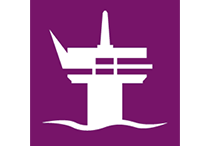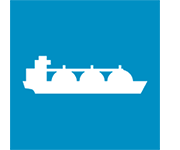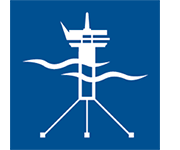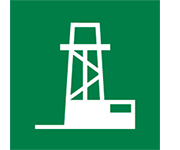DOWNSTREAM ENGINE

In our downstream engine, our emphasis remains on sustained cash generation from our existing assets and selective growth investments.
The implementation of our strategy will see us actively manage our assets around three themes in Downstream:
- operational excellence and cost efficiency, to maximise the uptime and operating performance of our asset base;
- driving the profitability of our refinery portfolio by optimising integration with crude supplies, marketing outlets and petrochemical plants; and
- selective growth in countries such as Brazil, China and India while maintaining or increasing our margins in our core countries.
UPSTREAM ENGINE

Shell’s upstream engine focuses on cash generation from our mature basins. Focused exploration, licence renewals and the application of Shell’s advanced technology will all contribute to extending the life of these assets in a safe and responsible manner.
Our positions in Europe, south-east Asia and some of the Middle East are included in the upstream engine and should underpin the financial performance of our Upstream businesses up to the end of the decade.
INTEGRATED GAS

Shell is the leading international oil company for integrated gas, which comprises LNG and GTL. Earnings from integrated gas were more than $9 billion in 2012 (about 40% of our total group earnings) and generated $12 billion of cash flow from operations (more than 20% of the total).
We have 22 million tonnes per annum (mtpa) of LNG capacity on-stream today and our LNG sales volumes grew 7% in 2012. The next tranche of LNG growth for Shell will come from Australia where we have 7 mtpa under construction that will increase our capacity by 30% by 2017. We have also worked internationally to diversify our integrated gas optionality, which will then allow us to progress the most attractive options for the next tranche of growth. We are currently studying new LNG options representing 20 mtpa of capacity that could increase our output by as much as 70% after 2017.
DEEP WATER

Shell is one of the industry’s pioneers in the deep-water oil and gas business with some 330 thousand boe/d of production in 2012, and a strong growth outlook.
We have nine new fields under construction, in Brazil, the Gulf of Mexico and south-east Asia. We focus on standardising development concepts. For example, in the deep waters of the Gulf of Mexico, Shell pioneered tension-leg platform developments at the Auger field in 1993. Today, the new Olympus TLP is being installed at the Mars B development, Shell’s sixth and largest tension-leg platform worldwide.
In addition to this production and development portfolio, Shell has built up new resources potential, with deep-water frontier exploration positions in a number of countries worldwide. These basins could become growth hubs for Shell in the future.
RESOURCES PLAYS

Hydraulic fracturing technologies have opened up an exciting new resources base for the industry and Shell intends to be a leading player in this area.
We currently have positions in resources plays – tight gas and shales – in 14 countries. Our production today is dominated by North American gas and liquids-rich plays, with exploration and appraisal activities in a number of basins worldwide. We are building up our operating capabilities and working to reduce costs in the supply chain. For example, in 2012 we incorporated Sirius Well Manufacturing Services, our 50:50 joint venture with China National Petroleum Corporation (CNPC). It will use advanced techniques to drill multiple wells for tight, shale and coalbed gas in a highly efficient, repeatable way.
FUTURE OPPORTUNITIES

This strategic theme covers the Arctic, Iraq, Kazakhstan, Nigeria and heavy oil plays. In these areas, Shell has access to large resources positions – typically in oil – but there are surface issues that can slow down the development pace. These include community and government relations, security of staff and evolving local fiscal and environmental regulations.
We are in these provinces for their long-term potential and we expect to see a measured development pace.



